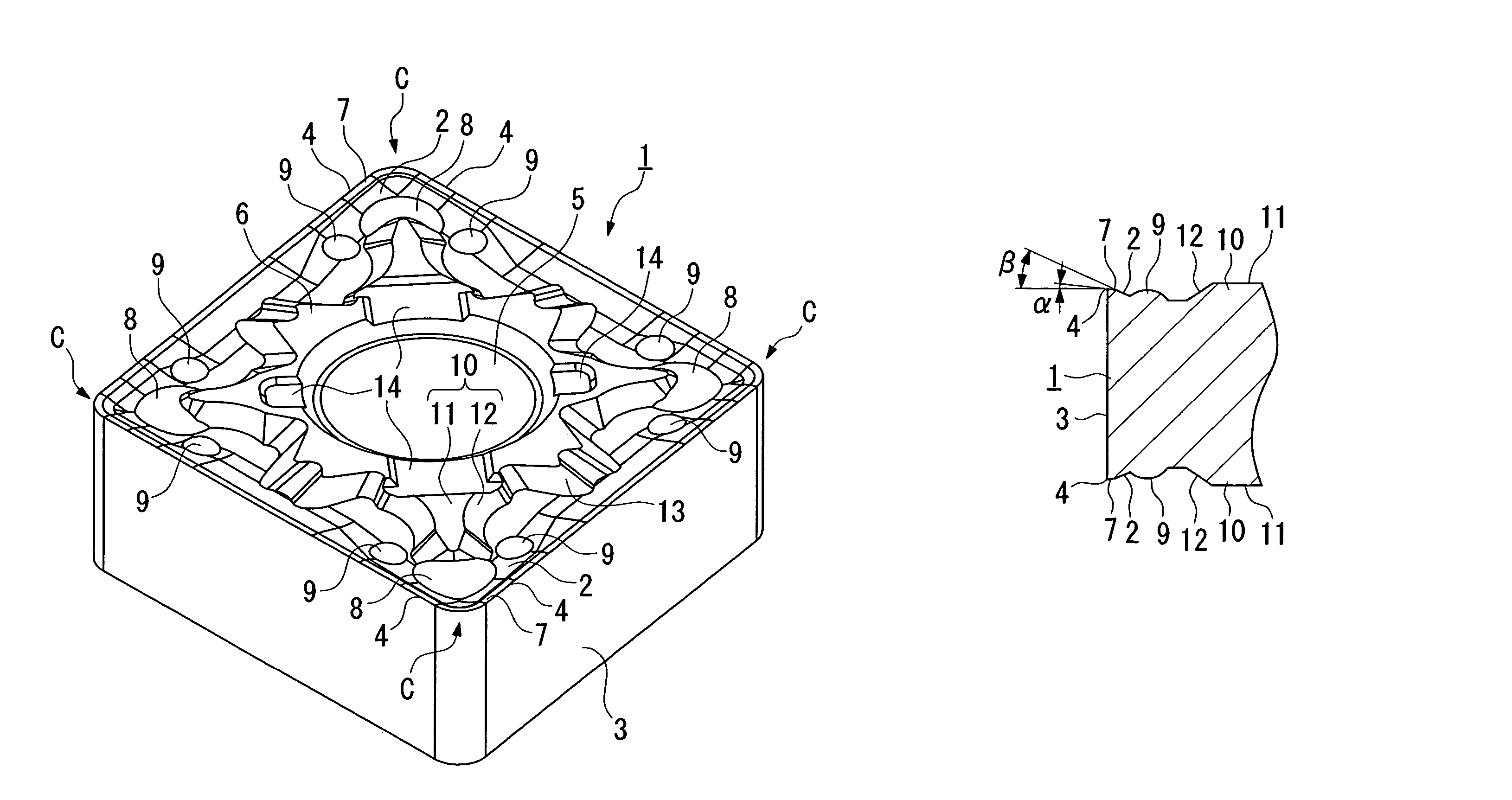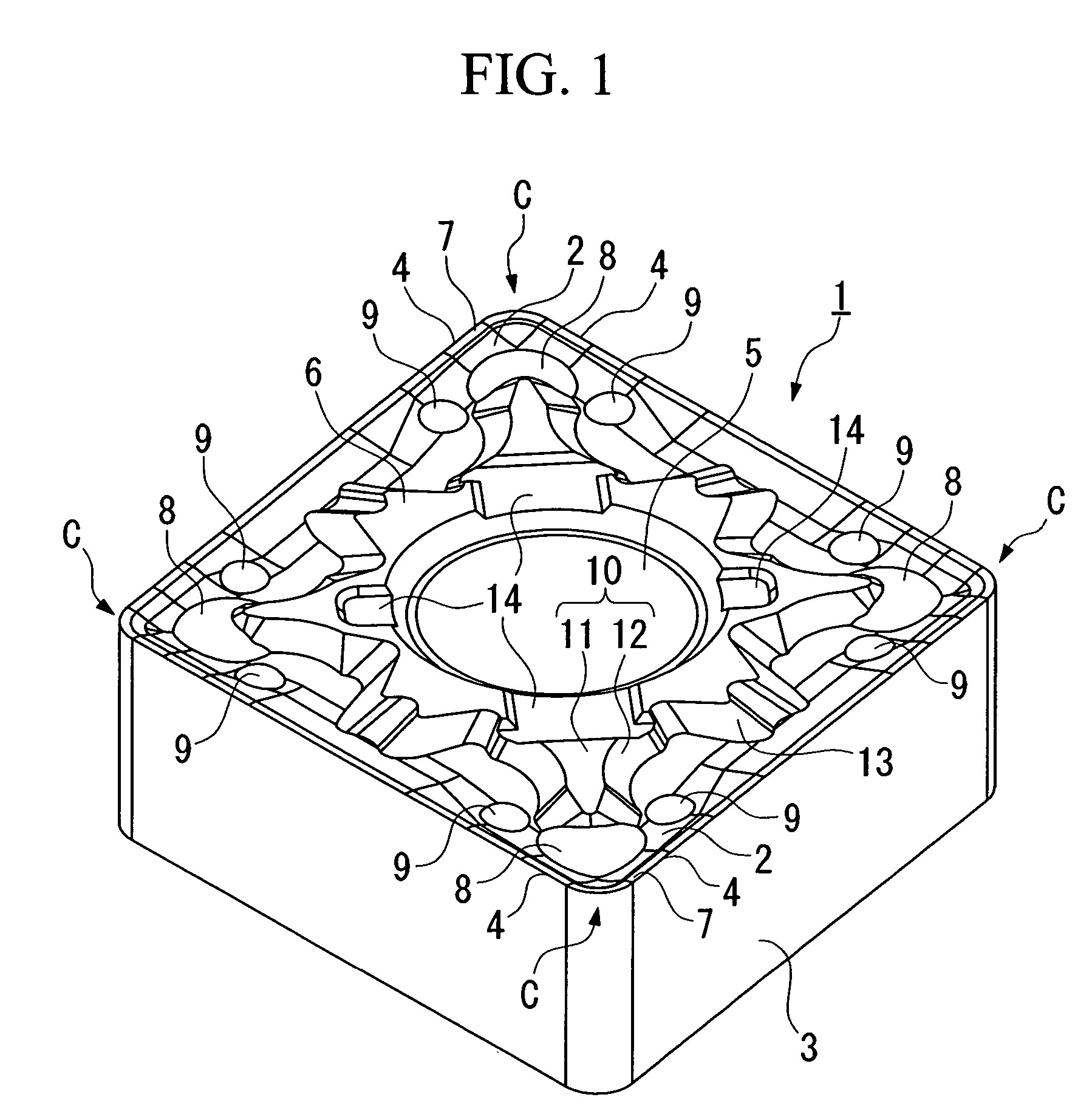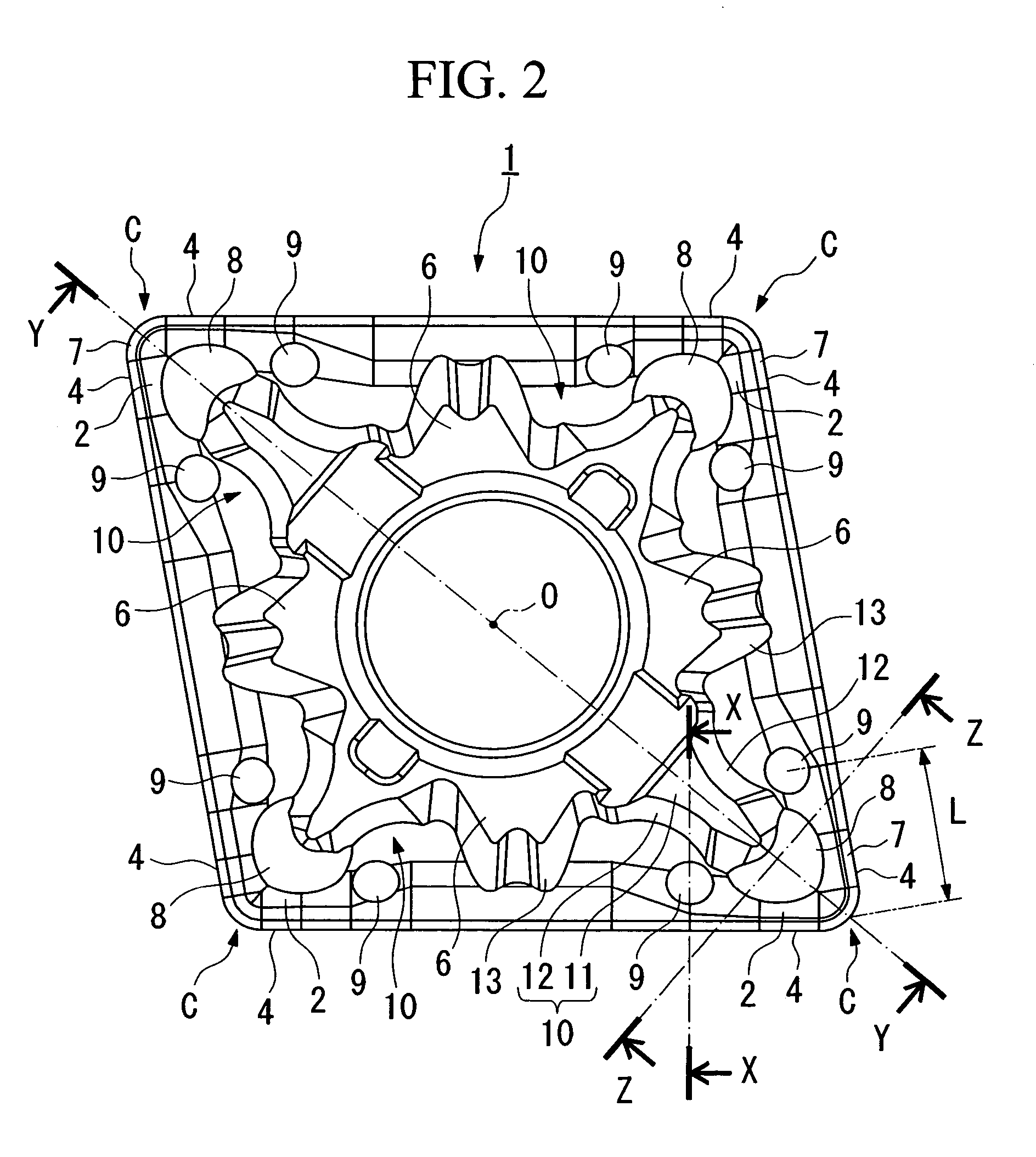Indexable insert
a technology of indexable inserts and inserts, which is applied in the direction of cutting inserts, manufacturing tools, shaping cutters, etc., can solve the problems of inability to reliably process, and inability to reliably control such chips, so as to reduce the breaking effect of chips, reduce the resistance of chips, and inhibit reliable processing.
- Summary
- Abstract
- Description
- Claims
- Application Information
AI Technical Summary
Benefits of technology
Problems solved by technology
Method used
Image
Examples
examples
[0073]Here, FIG. 23 shows the shape of chip due to the insert of the first embodiment shown in the FIG. 1 to FIG. 6, and FIG. 24 and FIG. 25 shows, in comparison to this, the shape of chip due to the insert of the first and the second comparative examples, for the case where the feed rate was 0.1 to 0.2 mm / rev, and the depth of cut was 1 mm. At first, the condition of the chip is shown for the case where as, shown in FIG. 26, an end face part P is formed orthogonal to the rotation axis of the work W, an external diameter part Q is formed orthogonal extending parallel to the rotation axis S, and a chamfered part M formed is formed orthogonal on the part where the end face part P and the external diameter part Q intersect. In the respective figures, the parts shown by the reference symbols P, Q, and M, are chip produced by the cutting of the end face part P, the external diameter part Q, and the chamfered part M. However, in FIG. 23, the chip of the end face part P and the chamfered p...
PUM
| Property | Measurement | Unit |
|---|---|---|
| thickness | aaaaa | aaaaa |
| thickness | aaaaa | aaaaa |
| angles of inclination | aaaaa | aaaaa |
Abstract
Description
Claims
Application Information
 Login to View More
Login to View More - R&D
- Intellectual Property
- Life Sciences
- Materials
- Tech Scout
- Unparalleled Data Quality
- Higher Quality Content
- 60% Fewer Hallucinations
Browse by: Latest US Patents, China's latest patents, Technical Efficacy Thesaurus, Application Domain, Technology Topic, Popular Technical Reports.
© 2025 PatSnap. All rights reserved.Legal|Privacy policy|Modern Slavery Act Transparency Statement|Sitemap|About US| Contact US: help@patsnap.com



